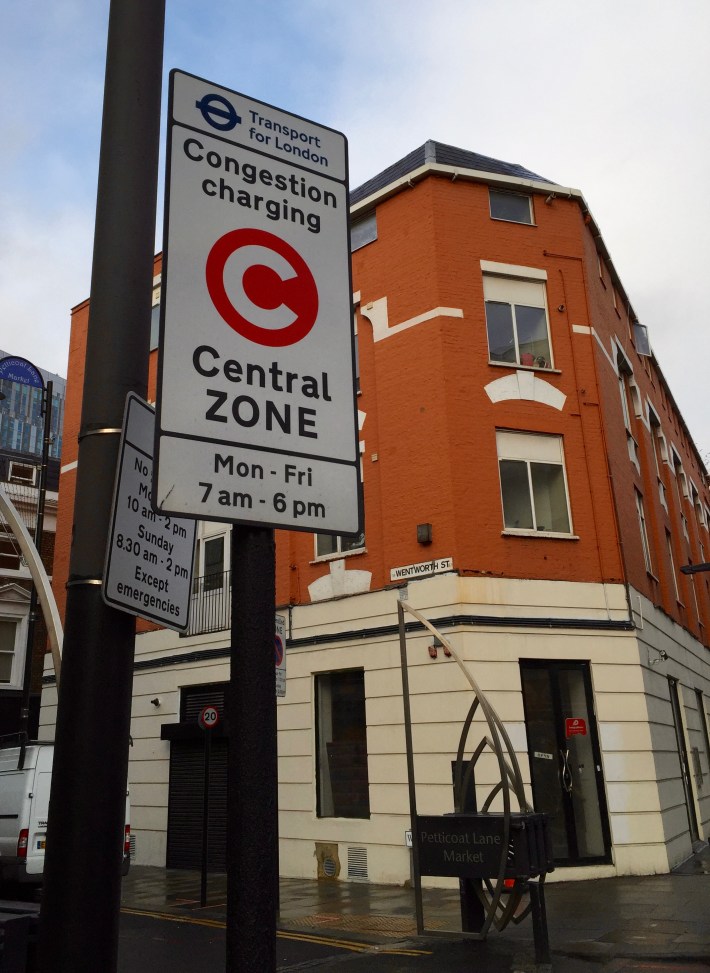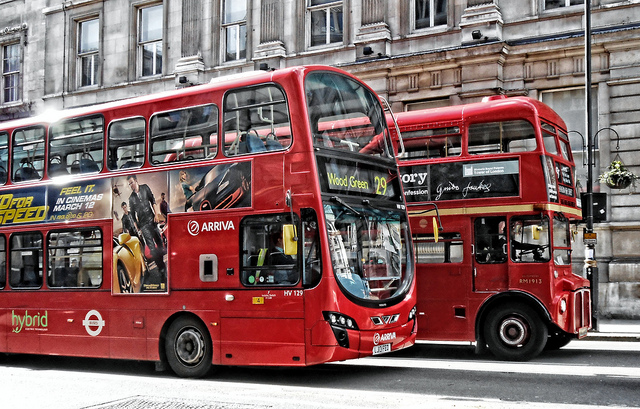Last month, NY1 politics reporter Bobby Cuza was sent to London to see whether New York could learn any lessons from that city's 16-year experience with congestion pricing. Cuza filed a week's worth of gripping reports that proved almost beyond dispute that London's program is working. But he flew back to the Big Apple unsure if London's success means New York will also get congestion pricing right. He filed this report for Streetsblog.
The passage of congestion pricing in Albany was one of the heaviest political lifts in recent memory. It took more than a decade of advocacy and a unique alignment of the political stars: First, the MTA’s descent into chaos created a more welcoming environment for a bold funding solution. Then, Democrats took control of the State Senate last fall, eliminating what had been a major roadblock.
Now comes the hard part: getting it to work.
London implemented congestion pricing in 2003, so its experience provides some useful guideposts. But it also lays bare some of the challenges facing New York. Here's what I found:
'Buses, buses, buses'
Then-Mayor Ken Livingstone's key advice to Mayor Bloomberg in 2007 was to add buses if he wanted to succeed. In tandem with the launch of its congestion charge, London ramped up bus service into the congestion zone by 27 percent. Ridership skyrocketed by 37 percent virtually overnight — about half of which was drivers who’d gotten out of their cars, according to estimates by Transport for London.
Today, it’s striking how saturated central London is with double-decker buses zipping along dedicated bus lanes, unimpeded by parked cars.
Could the same approach work in New York? Buses are not woven into the fabric of our transit system the way they are in London, where bus ridership is three times higher. And radically remaking our bus system would require visionary leadership.
But from whom?
One man’s vision
London has one major advantage over New York: Its mayor controls nearly all facets of transportation, from the Tube and bus network to the major roads.
It was all spelled out in the Greater London Act of 1999, which established the mayoralty itself. That enabling legislation also expressly authorized a congestion charge — which meant Livingstone could enact it unilaterally, without so much as a public hearing.
Centralized command meant Livingstone could design the program and make adjustments as he saw fit. It’s a far cry from New York, where elected officials seem eager to distance themselves from congestion pricing, punting on major details of the plan until after the 2020 elections.
Limit exemptions
Everyone involved with London’s congestion charge was emphatic on one point: Take a hard line on exemptions, or you quickly erode the plan’s effectiveness.
New York, of course, has already seen this contentious debate take shape. Truckers, taxis, off-duty police officers and the disabled are just some of the groups already seeking a break.
It remains to be seen how susceptible the yet-to-be established Traffic Mobility Review Board will be to these lobbying efforts. But Albany did come down hard on yellow taxis and other FHVs, including Uber, by passing a surcharge last year on rides in the busiest parts of Manhattan.

Technology
New York would seem to have an edge in its ability to deploy the right equipment. London’s system is still running on 2003 technology. Here, the TBTA is already surveying possibilities ranging from roadside bluetooth readers to a system that relies solely on your smartphone to determine when you cross into the congestion zone.
For now, New York’s plan is to toll passenger vehicles only once a day. But the system could eventually allow for a per-mile charge, where you pay based on how much you drive while in the zone. That kind of pricing is already very much a part of the policy debate in London, even if the British system isn’t yet outfitted with the necessary technology.
Revenue targets
London’s charge was singularly focused on battling congestion. New York has made no such pretense. This venture is, first and foremost, a revenue raiser for the beleaguered MTA.
That might actually make things simpler from a PR perspective. There is, after all, a hard target: The MTA must raise enough money to back $15 billion worth of bonds for the MTA capital program.
So there’s a ready answer when the public complains about high fees: It’s our statutory obligation.
Just do it
In London, public acceptance soared once the charge took effect and residents saw there were few ill effects. Livingstone was re-elected the following year. There has been no existential threat to the charge ever since.
It may be a lesson for jittery New York politicians who are afraid to associate themselves too closely with congestion pricing.
I interviewed Livingstone in his lovely backyard garden last month. When we asked his advice for New York, he was brief:
“Just do it as quick as possible.”
Bobby Cuza is a political reporter at NY1. His series on London’s congestion-pricing charge can be found here.







